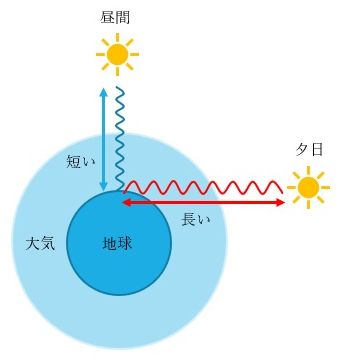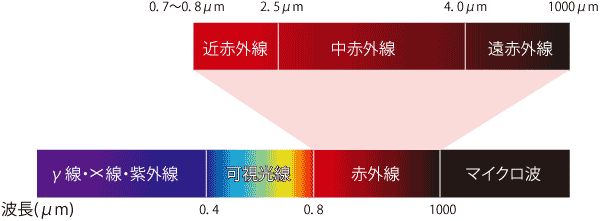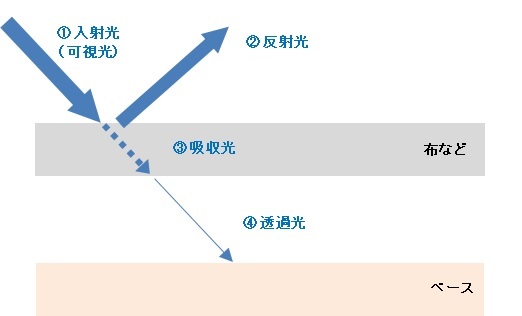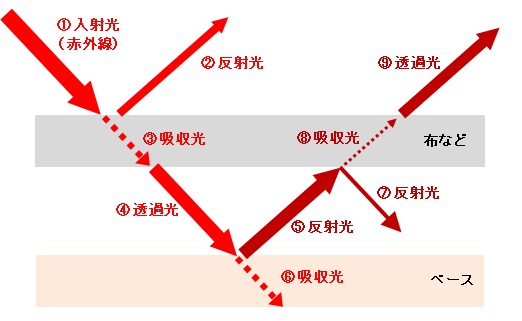Mechanism of see-through with an infrared camera
why is the sunset red

In order to understand the mechanism of transmission by modifying the infrared camera,
Let’s look at the wavelengths of light and their properties, using the colors of daytime and sunset as examples.
General light is a combination of several lights such as blue light and red light,
Each light has its own wavelength.
This light is divided into wavelength components and is called a “spectrum".
Blue light has short wavelengths and red light has long wavelengths.
The evening sky turns red because the sun’s light enters from the side (from the tangential direction).
Since the distance of the atmospheric layer to pass through becomes long, blue light is completely scattered and hardly reaches the surface of the earth.
This is because red and orange colors, which are difficult to scatter, are emphasized and reach the human eye.
In other words, it can be said that light with a long wavelength can easily pass through.
Infrared light is a band of light that deviates from visible light toward the longer wavelength.
Infrared photography of astronomical objects and transmission uses the near-infrared band.

How infrared rays can be seen through
By modifying the infrared camera, it is possible to see through
This is because infrared rays have longer wavelengths.
(1) for visible light
As the reflected light of [2], it is almost reflected on the surface,
Since there is almost no transmitted light in [4], the inside cannot be seen.
(2) for infrared
Since there is a lot of transmitted light, the transmitted light of [9] finally reaches the camera,
You can see inside.
Please refer to the following article for the transmission experiment of infrared camera modification.
To prepare for the infrared camera mod, see the summary article below.


Discussion
New Comments
No comments yet. Be the first one!